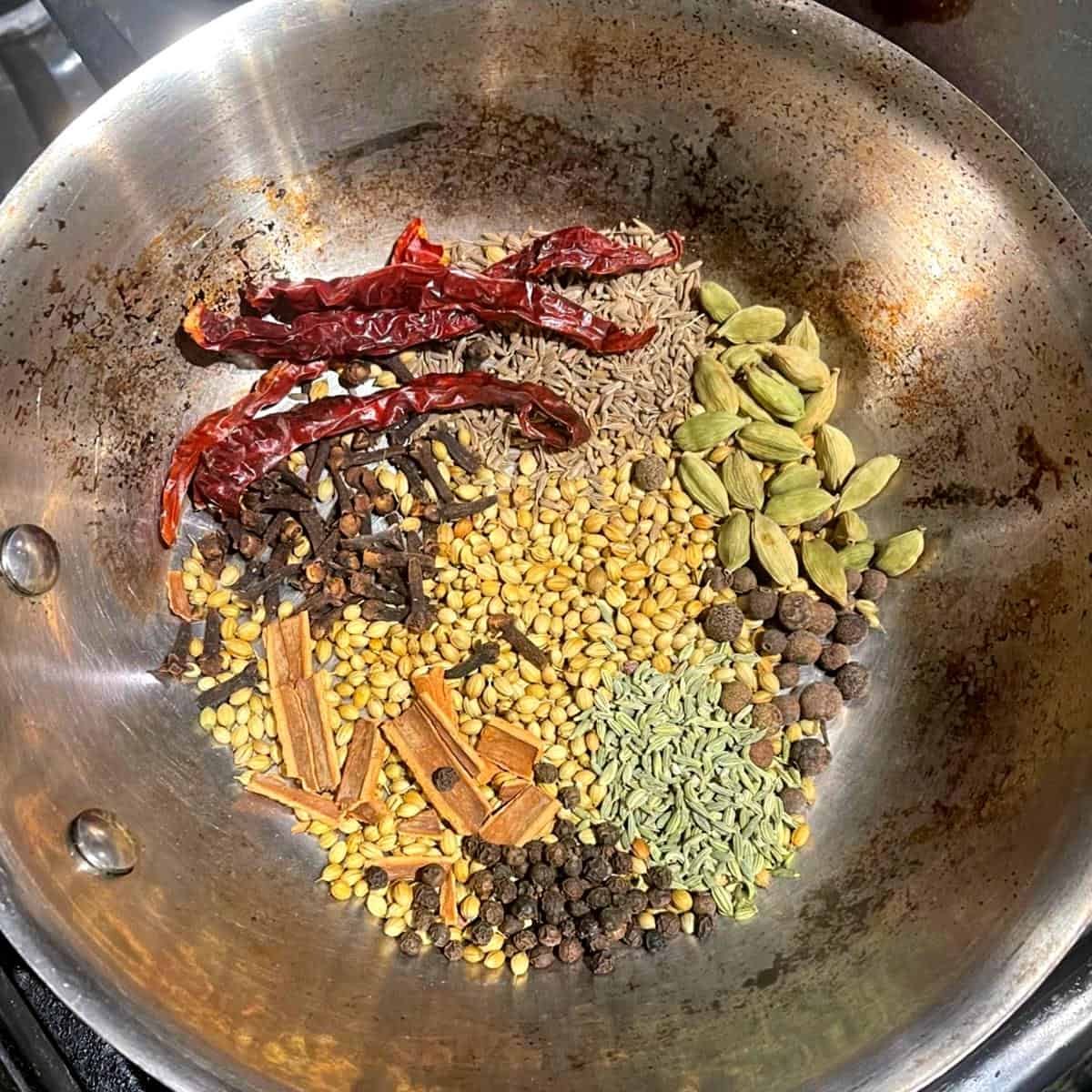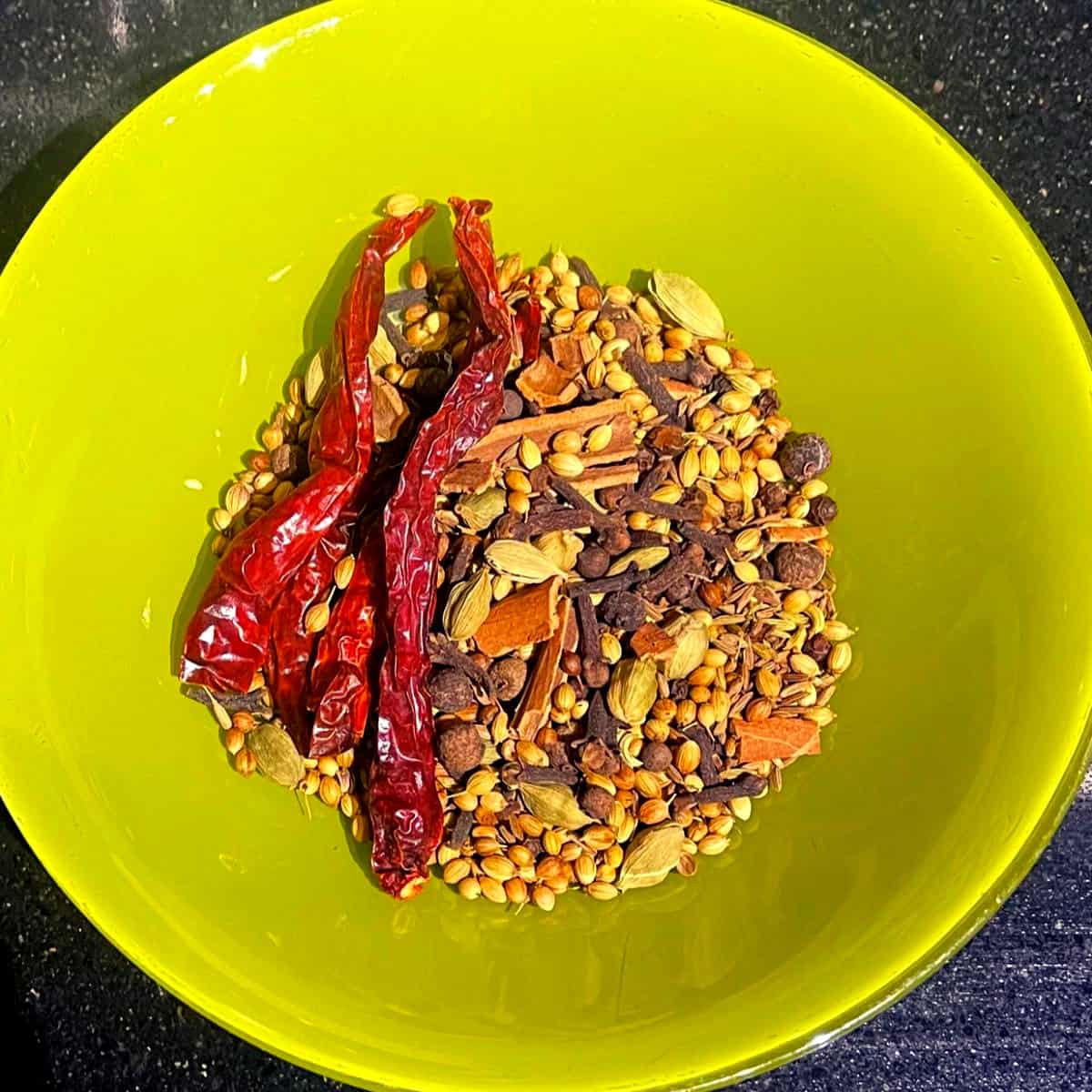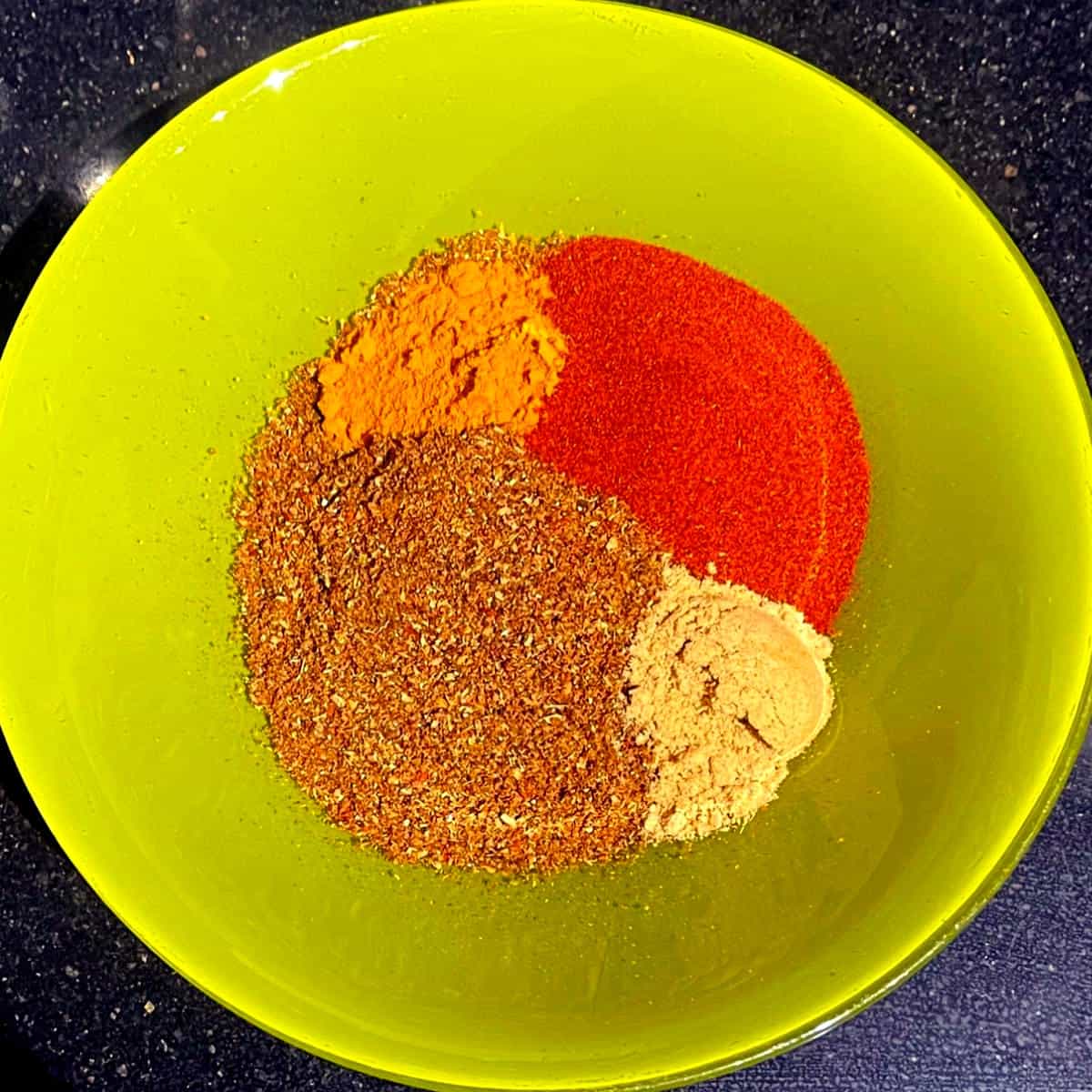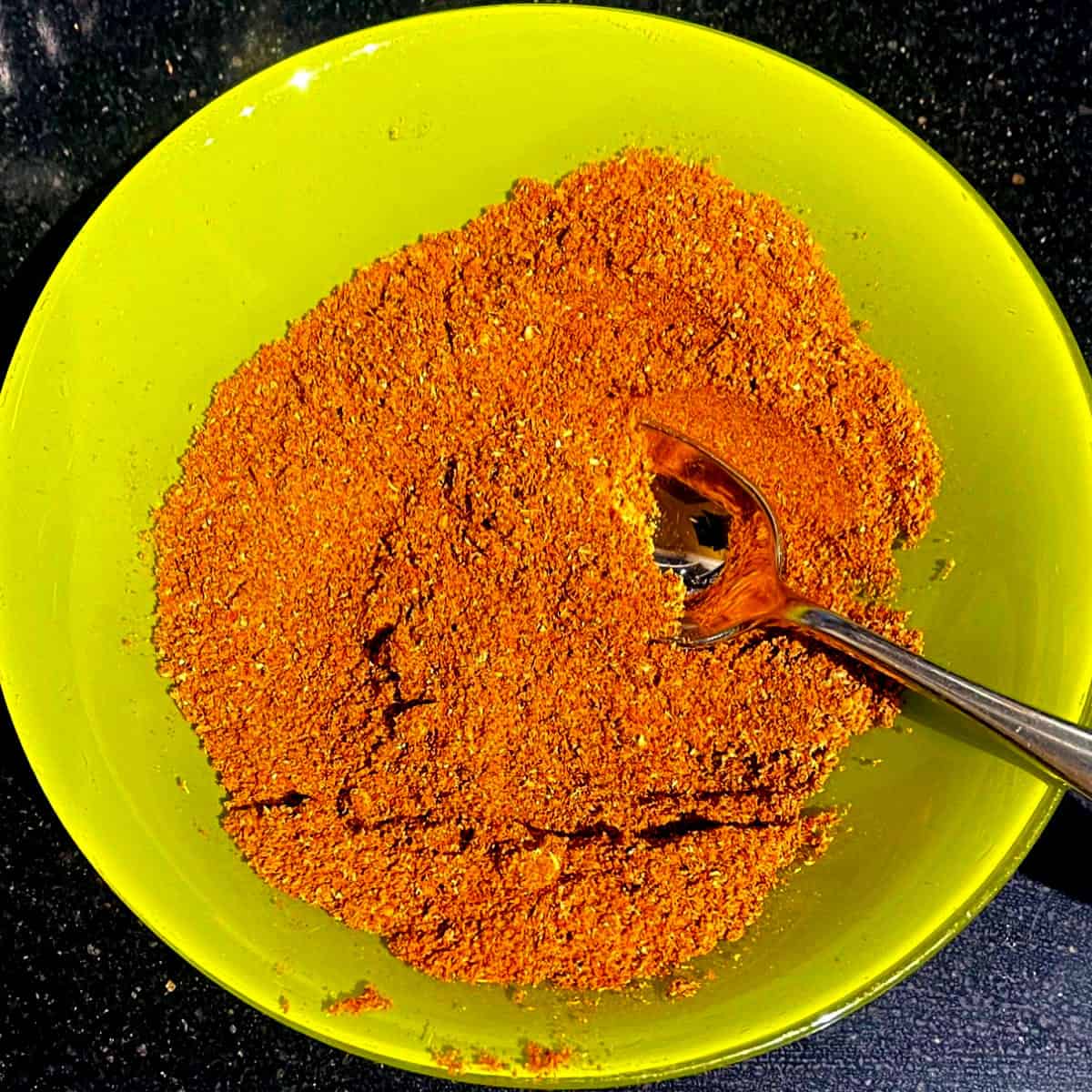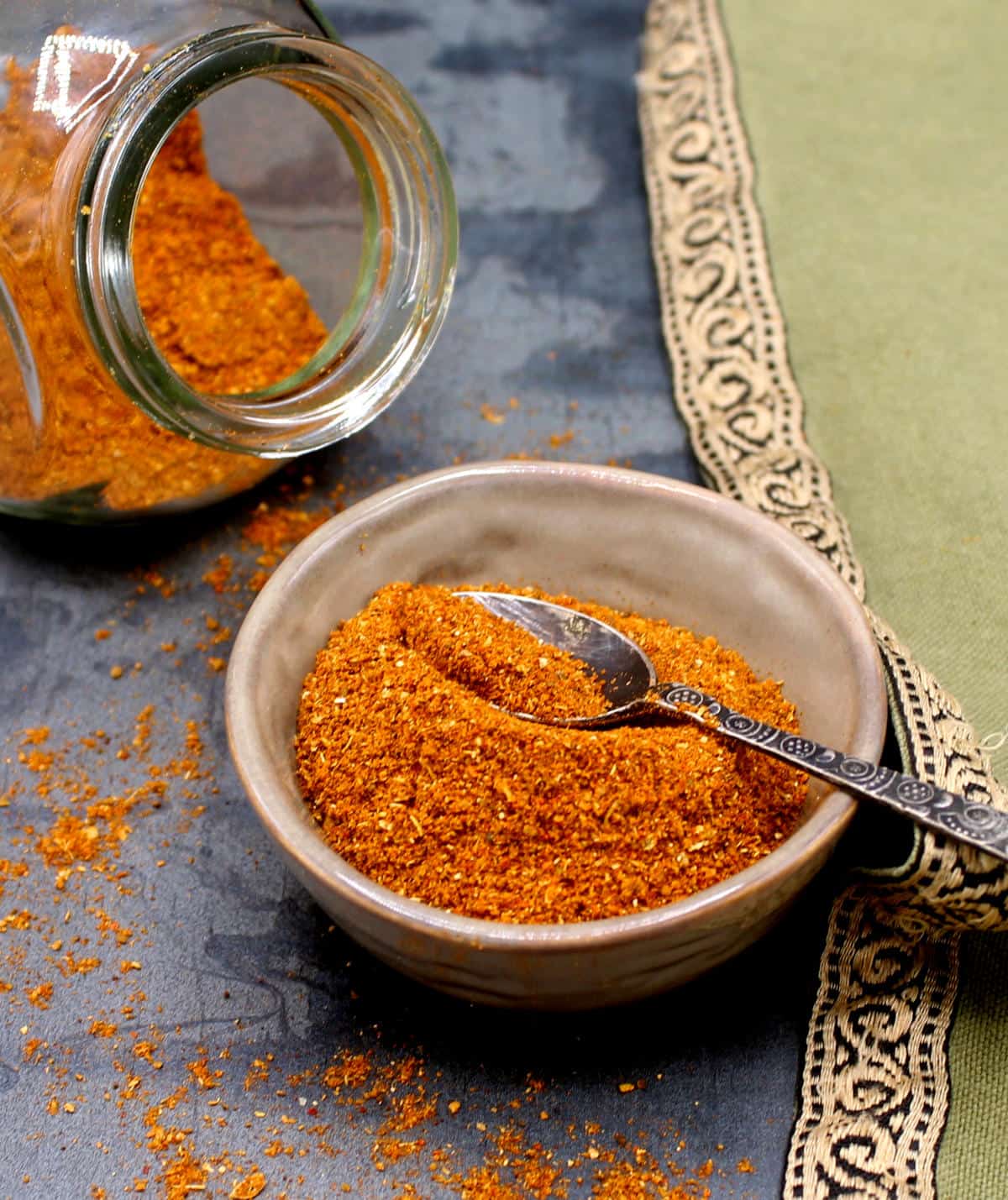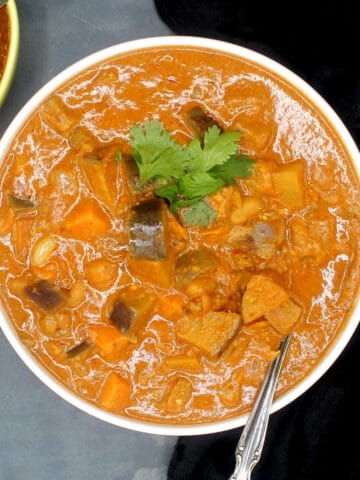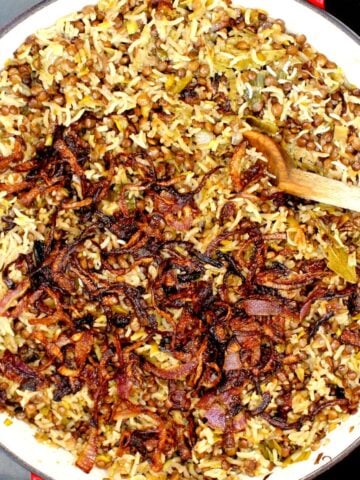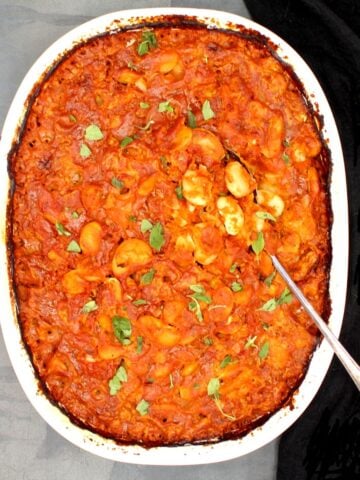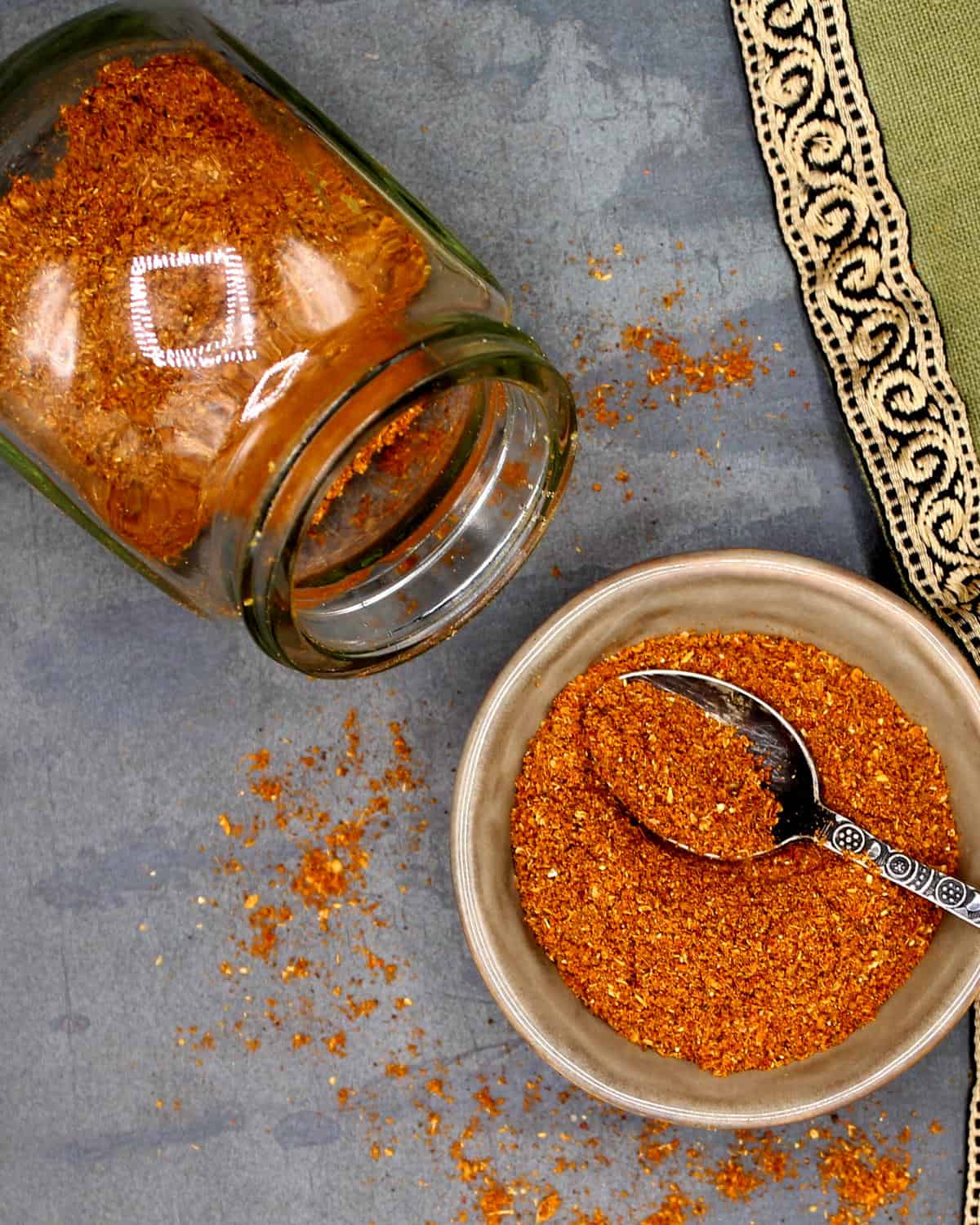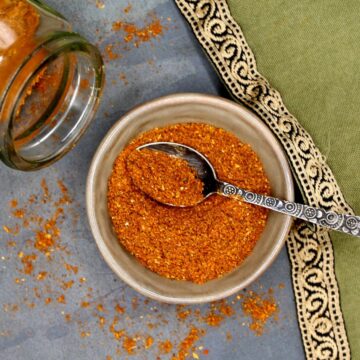What is ras el hanout?
Ras el Hanout is a north African spice blend most associated with Moroccan cooking, although it’s also used in Tunisia and Algeria. It has intense, floral notes and it is a wonderful flavor to add to Moroccan inspired dishes and especially slow cooked stews, like this delicious chickpea tagine. The words “ras el hanout” translate loosely to “top of the shop” or “top shelf,” indicating the exalted status this spice blend holds among many others from the region. It is truly a transformational ingredient, much like a harissa paste, because it shifts the flavor profile of a recipe completely, adding to it tons of appetizing allure. There are perhaps as many versions of it as there are cooks in Morocco, much as one would say with other global spice blends like garam masala and berbere. Versions of ras el hanout can include more than a dozen spices and herbs, including lavender flowers and rose petals. While these are not hard to find, in my version I stuck with spices that are more likely to be in the pantry of anyone that loves to cook global recipes. You will find ras el hanout recipes that blend powdered spices, but I prefer to use whole spices simply because they give a far superior flavor. You can also toast the whole spices before you blend them, which adds to the aroma of the spice blend and the food you cook with it. Powdered spices lose their flavor the longer they sit on the shelf, so there’s certainly a strong argument to be made for using whole spices. The only ground spices we will need for this recipe are turmeric, ginger and paprika.
Why you will love this recipe
Intensely aromatic. You need a perfect balance of spices to make the perfect ras el hanout recipe, and this combination hits the spot.Easy to make. You need just 10 minutes of time to make this spice mix. This recipe makes enough for 3-4 uses but you can easily double or triple it if you want to make a larger batch.Versatile. You can use this ras el hanout spice blend not just in Moroccan inspired stews but also as a rub for tofu or tempeh, as a flavoring for vegan meats, couscous, and in veggie bean burgers. Your imagination is the limit!
Ingredients
Whole spices
Coriander seedsCumin seedsFennel seeds. You can substitute these with two star anise.Whole nutmeg. If you don’t have whole nutmeg, use two teaspoons of ground nutmeg and add it to the recipe along with the other powdered spices.Cinnamon sticksGreen cardamomBlack peppercornsAllspice berriesClovesDried red chili peppers. Use any spicy pepper, like arbol. If you don’t have it, use cayenne and add it along with the other powdered spices to the recipe.
Powdered spices
TurmericGingerPaprika. You can use cayenne pepper for a spicier blend.
How to use this spice blend
Use it in aromatic, slow-cooked stews like this delicious jackfruit “lamb” tagine.Use it to flavor rice or couscous or even pasta dishes and add an exotic flair. Use it as a spice rub before you grill tofu or tempeh or veggies, or add it to veggie burgers for a delicious kick. Ras el hanout is especially wonderful with veggies like carrots, sweet potatoes and winter squash.
Helpful tips
Don’t leave the spices unattended at the stove. Stay with them and stir frequently to ensure they toast evenly. As soon as you turn off the stove remove them to a bowl to ensure they don’t continue to cook.Let the spices cool thoroughly before you powder them. This will ensure there is no moisture in the spices that could sneak into the powdered blend, reducing its shelf life.You might be tempted to add in the powdered spices while blending the whole spices and you certainly can, but keep in mind that when you open the blender the spices will most likely assail your nostrils. It’s just easier to add them at the end. In any case, make sure you keep your face turned away from the blender or spice grinder when you open it to avoid inhaling the spice fumes, which could make you sneeze.
Storage instructions
Store ras el hanout in an airtight jar in a cool, dark cupboard in your kitchen. Spices have oils in them and keeping the blend cool ensures the oils don’t go rancid. You can also store it in the refrigerator or freezer, if you have room, to prolong the shelf life of your ras el hanout. The spice blend will taste best if used within three months although you can store it up to a year.
More African/Mediterranean recipes
If you love this recipe for ras el hanout, be sure to check out more global vegan recipes at Holy Cow Vegan! Check to get new recipe updates by email.
Recipe card

